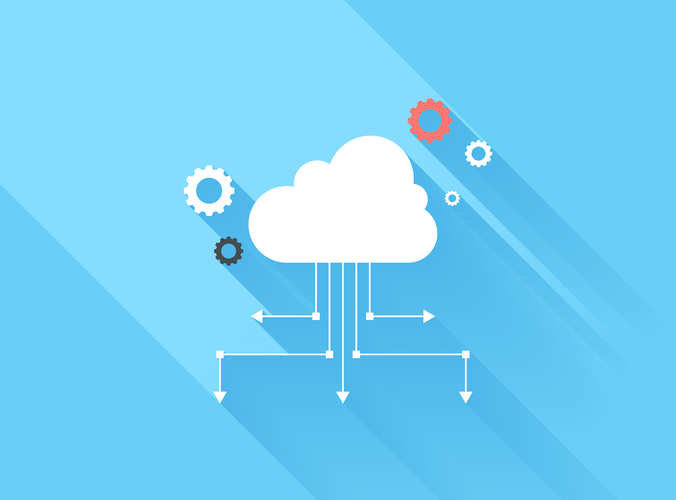Content
In small-and medium-sized companies, an IT support person performs those roles in addition to other duties. Regardless of company size, mission-critical database applications require continuous attention and technical support. Also installs and configures software applications that are used within the organization. Although user support specialist coordinate with other technical support areas, their primary focus is user productivity and support for user business process. This design phase lays a foundation for the next step of the life cycle, which is development. With that being said, let us have a closer look at each of the software development phases. Some PMs may combine, divide, or skip some stages, leaning on the project’s requirements.
Some organizations also employ additional software development life cycle steps such as test planning and preparation, training development, and implementation planning. Since these steps are auxiliary to the main ones, they are undertaken at the same time as the generic ones. SDLC assists with process development, change management, user experience, and policies in addition to technical aspects of system development. An SDLC also provides for planning ahead of time, determining expenses and staffing decisions, defining goals, measuring Institution of Engineering and Technology performance, and validating points at each stage of the cycle to improve the final product’s quality. Group composed of systems analysts and programmers who handled information system design, development, and implementation. Today, many companies use development teams consisting of users, managers, and IT staff member for those some tasks. A popular model for information systems development is a project-oriented team using RAD or JAD, with IT professionals providing overall coordination, guidance, and technical support.
Risk Management Framework Planning And Initiation
It includes everything which should be designed and developed during the project life cycle. During the design phase, lead developers and technical architects create the initial high-level design plan for the software and system. This includes the delivery of requirements used to create the Design Document Specification .

Many organizations subdivide their SDLC methodologies into a larger number of phases than the five referenced in NIST guidance, potentially offering closer alignment of SDLC phases and corresponding RMF tasks. Once the themes have been identified then there are predetermined tasks and techniques to finish the project as defined by the approved methodology of the organization. After the Disposal phase, the System Development Life Cycle begins again. Instead, systems generally evolve to match improvements in technology or to meet changing needs.
Complementary Methodologies
Program specifications are developed as part of the development phase prior to the commencement of programming. These specifications provide the thought process required to determine the steps to code the programs.
Our red team models how a real-world adversary might attack a system, and how that system would hold up under attack. Synopsys Web Scanner – Dynamic analysis evaluates an application while executing it to uncover issues with its runtime behavior. Defensics- Identify defects and zero-day vulnerabilities in services and protocols. Defensics is a comprehensive, versatile, automated black box fuzzer that enables organizations to efficiently and effectively discover and remediatesecurity weaknessesin software. The release phase involves the team packaging, managing and deploying releases across different environments.
- Only professional software developers have the necessary skills and knowledge of every SDLC process.
- The goal of analysis is to determine where the problem is, in an attempt to fix the system.
- Every hardware or software system will go through a development process which can be thought as an iterative process with multiple steps.
This document should be thoroughly understood by the developers and also should be reviewed by the customer for future reference. Business analyst and Project Manager set up a meeting with the customer to gather all the information like what the customer wants to build, who will be the end-user, what is the purpose of the product. Before building a product a core understanding or knowledge of the product is very important. An online banking SaaS company trained its developers to code securely, but API security also required “shifting right” to … For example, as the system analyst of Viti Bank, you have been tasked to examine the current information system. Customers in remote rural areas are finding difficulty to access the bank services.
Sdlc: Methodologies Of System Development
In more complex words, the life cycle explains how the software is developed from the stage of inventing the idea to launching the product. Only professional software developers have the necessary skills and knowledge of every SDLC process. Such specialists can help you choose the right model depending on the guidelines and expectations. No field stresses the importance of a well-built system quite like computer science. Effective computer systems ensure a logical workflow, increase general efficiency and make it easier for companies to deliver high-quality products to their clients. The System Development Life Cycle is a process that involves conceptualizing, building, implementing, and improving hardware, software, or both. The System Development Life Cycle must take into consideration both the end user requirements and security concerns throughout all its phases.
Due to such lack of flexibility, this SDLC results in a lot of waste and rework, so it is rarely used in modern IT companies. Each process model follows a particular life cycle in order to ensure success in process of software development. The development phase is where the system or application’s security features are developed, configured and enabled. Use the program specifications to describe the program logic and processing requirements.
What is the Software Development Life Cycle (SDLC)? – DevPro Journal
What is the Software Development Life Cycle (SDLC)?.
Posted: Wed, 13 Oct 2021 07:00:00 GMT [source]
The risk can be resolved by building a prototype of the data access subsystem. Involvement of a customer from the initial stage reduces any confusion in the requirement or understanding of any functionality. Missing feature or functionality or a change in requirement can be identified in the evaluation phase and can be implemented in the refined prototype. Once the requirement gathering is done, the quick design is created and the prototype which is presented to the customer for evaluation is built. The prototype model is a model in which the prototype is developed prior to the actual software. Waterfall model is the simple model which can be easily understood and is the one in which all the phases are done step by step.
Completing the verification and validation processes helps ensure the program’s success. Few people in the modern computing world would use a strict waterfall model for their SDLC as many modern methodologies have superseded this thinking.

Maturity Action Plan – Get recommendations establish or improve your software security stance. Building Security In Maturity Model – Measure and benchmark your software security program against other security programs and industry best practices. The best method for ensuring that all tests are run regularly and reliably, is to implement automated testing. Infill development means new construction on a vacant commercial lot currently held as open space.
What Are The Sdlc Models
Modeling and prototyping can help you understand user needs and develop a better system. She has got her Bachelor’s degree in Computer Science and a Master’s degree sdlc phases in detail in Information Systems and Technology. Julia knows everything about project estimations, calendar plans, setting tasks, and the ways to control project workflow.

It’s helpful to understand the cycle’s different phases so you can apply them to your next project. In this article, we define what the system development life cycle is, explain how it works, list what the development stages are and provide tips on how you can successfully implement the life cycle.
When you interact with users, you must put aside any preconceived notions and listen closely to what they are saying to you. Chapter 3 describes the interview process and contains may tips about getting the most out of face-to-face communication. Once the system is deployed, any necessary upgrades, enhancements, and changes can be made, implementing new features into the operating software. It is crucial to maintain and modernize the system regularly so it can adapt to future needs.
3.Software testing must take place in a specialized testing environment and should test the full functionality of the system . 9.All errors shall be tested after correction to ensure that they have been eliminated as part of the regression testing process and that no new ones have been introduced. 1.A security specialist shall be appointed to provide security advice for the project—this is usually the Information Security Manager. The Forensic Laboratory does not perform development or modification on purchased software packages. 3.Change management procedures for operational software are implemented. 2.Test criteria are met prior to implementation of operational software. System owners should validate that the alignment of RMF tasks to SDLC phases matches the practices and process standards in their own agencies.
Adhering to the SDLC process leads to the development of the software in a systematic and disciplined manner. Having a clear view of an entire project, workers involved, estimated costs and timelines. To manage and control any SDLC initiative, each project will be required to establish some degree of a work breakdown structure to capture and schedule the work necessary to complete the project. The WBS and all programmatic material should be kept in the “project description” section of the project notebook. The WBS format is mostly left to the project manager to establish in a way that best describes the project work.
